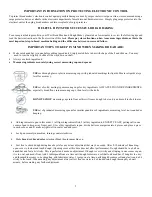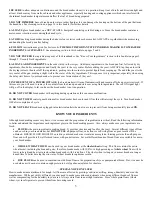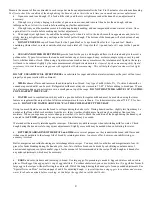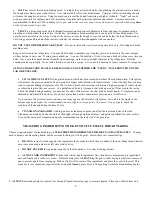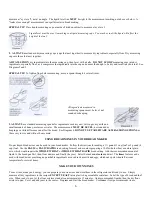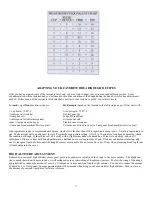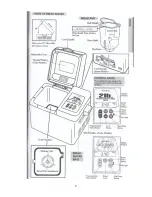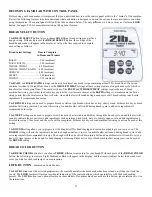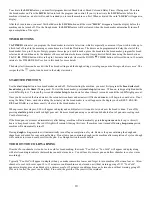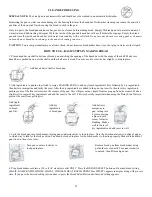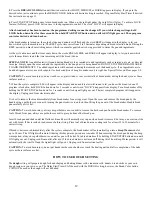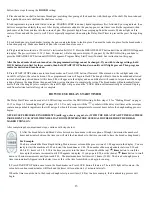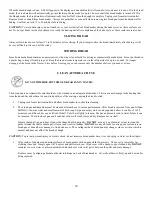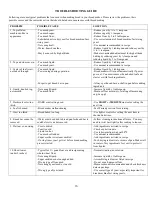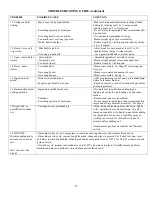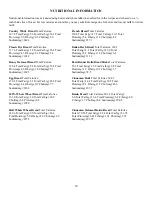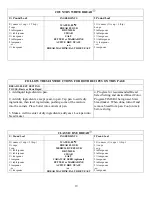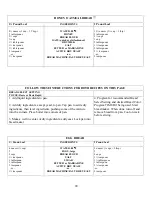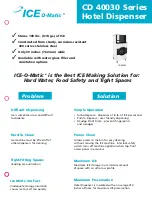
5
•
SALT
has several functions in making bread. It inhibits the yeast growth while strengthening the gluten structure to make
the dough more elastic, plus it adds flavor. Use ordinary table salt in your bread maker. Using too little or eliminating the salt
will cause the dough to over-rise. Using too much can prevent the dough from rising as high as it should. “Light” salt can be
used as a substitute for ordinary table salt, providing it contains both potassium chloride and sodium. Use same amount as
recommended for table salt
. When adding salt to pan, add to one corner to keep it away from yeast, especially when using timer
as the salt can retard its growth.
•
YEAST
is a living organism, which, through fermentation, feeds on carbohydrates in flour and sugar to produce carbon
dioxide gas, which makes the bread rise. Active dry, fast rising or bread machine yeast can be used in your bread maker. Use
only the amount stated in the recipe. Using a little more can cause the dough to over-rise and bake into the top of bread maker.
Fast rising yeast and bread machine yeast are virtually the same and interchangeable with one another.
DO NOT USE COMPRESSED CAKE YEAST
. Recipes in this book were tested using only active dry, fast rising and bread
machine yeast.
Keep yeast stored in the refrigerator. You may find it handy to purchase yeast in glass jars so as to measure the exact amount
without having to waste any. If using yeast packed in a ¼-ounce foil envelope, it is best to open a fresh envelope every time you
bake. If you save the unused amount from the open envelope, store in a dry, airtight container in the refrigerator. Date the
container and use promptly. Do not mix old and new yeast in a recipe. A ¼-ounce foil envelope of yeast contains 2¼ teaspoons.
ALWAYS MAKE SURE YEAST IS FRESH AND HAS NOT EXPIRED THE “USE BY “ DATE PRINTED ON THE
JAR OR ENVELOPE.
•
VITAL WHEAT GLUTEN
is the gluten protein, which has been rinsed from wheat flour and then dried. Vital gluten
will increase the protein content in flour to product a higher loaf of bread with lighter texture. About the only time you may
wish to consider adding vital gluten is for 100% whole wheat bread or recipes containing a high percentage of whole wheat
or other whole grain flours or cereals. As a guideline, add one (1) teaspoon vital gluten per cup of flour used in the recipe.
Check the dough during kneading; you may need to add a little water as the vital gluten absorbs liquid. Vital gluten can be
obtained at most health food stores. Do not use gluten flour, as this contains less protein and is less effective.
Or, to increase the protein content, you can use a large egg as a substitute for vital gluten. Just add it to the liquid in the
bottom of pan and
reduce the recommended amount of liquid in recipe by two (2) ounces (¼ cup).
Again, check the
condition of the dough during the knead cycle.
•
CINNAMON AND GARLIC
: Adding too much cinnamon or garlic can affect the texture and size of the loaf.
Cinnamon can break down the structure of the dough, affecting height and texture, and garlic can inhibit the yeast activity.
Use only the amount of cinnamon and garlic recommended in the recipe; don’t be generous.
MEASURING INGREDIENTS: THE KEY TO SUCCESSFUL BREAD MAKING
The most important part of bread making is to
MEASURE THE INGREDIENTS PRECISELY AND ACCURATELY
. You may
need to adjust your measuring habits, but the rewards for doing so will be great. Follow these very important tips:
•
READ
the recipe first and organize the ingredients in the order in which they are added to the pan. Many bread disasters
occur because an ingredient was left out or added twice.
•
DO NOT EXCEED
the ingredient capacity of the bread maker. Use only fresh ingredients.
•
ALWAYS ADD INGREDIENTS
in the order listed: liquid ingredients first, then butter or margarine, dry ingredients
next and finally yeast in the very center. Before adding yeast,
ALWAYS
tap the pan to settle dry ingredients into corners of
pan to prevent liquid from seeping up. Make a slight well in center of dry ingredients and place the yeast in the well. This
sequence is very important, especially when using the
timer
to prevent yeast from getting wet before bread making begins.
1. ALWAYS
use standard glass or plastic “see-through” liquid measuring cups to measure liquids. Place cup on flat surface and
Содержание L4972T
Страница 9: ...8...


